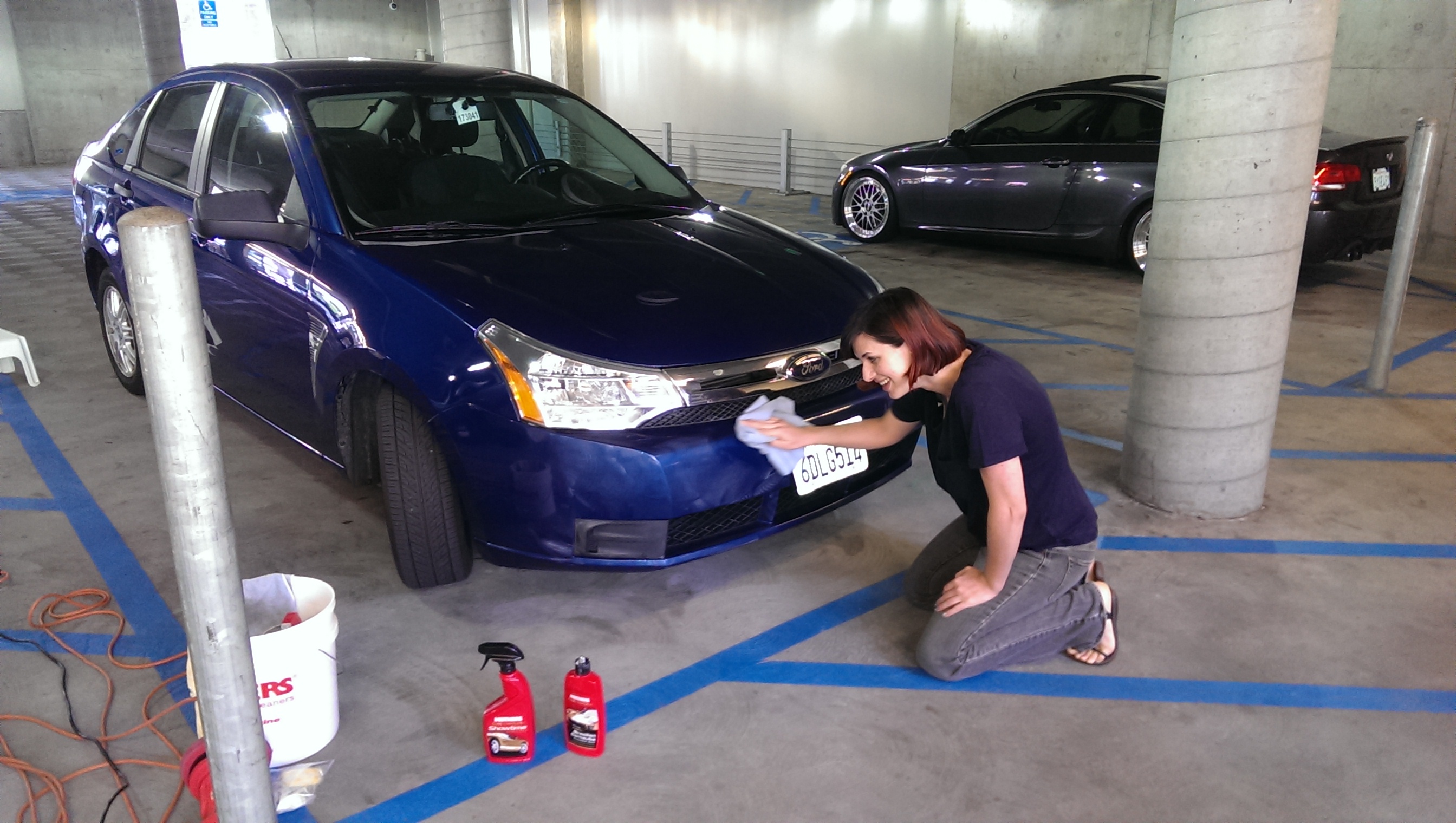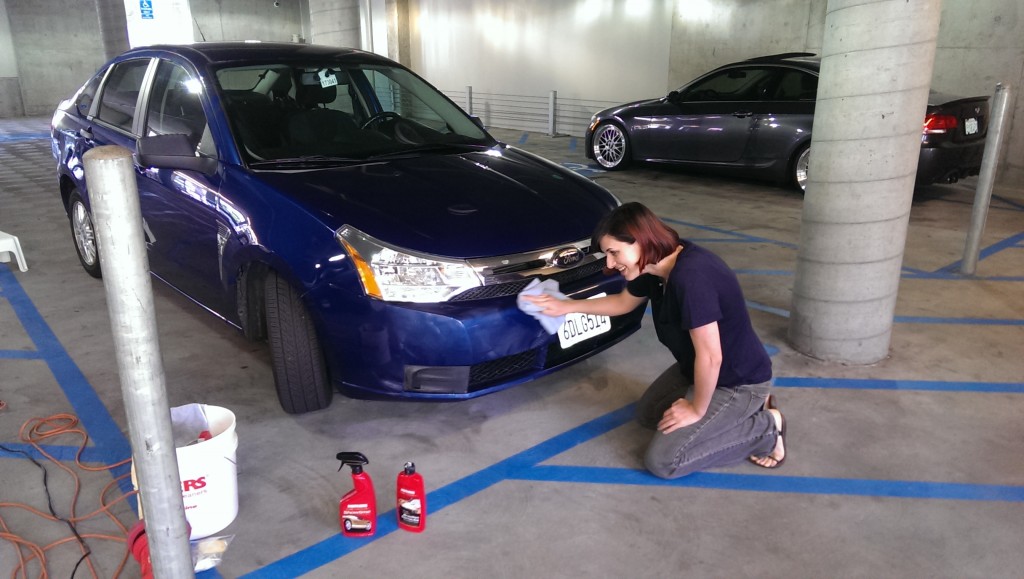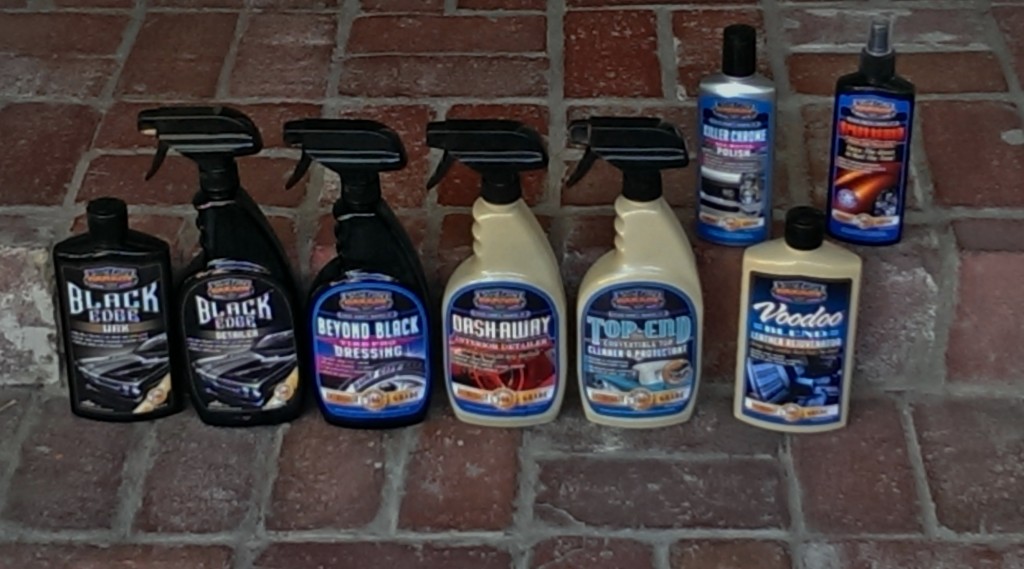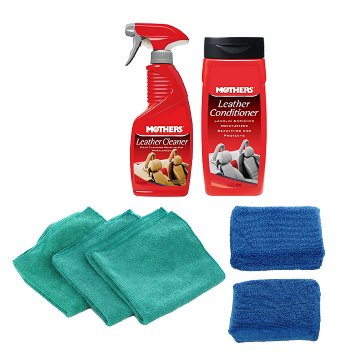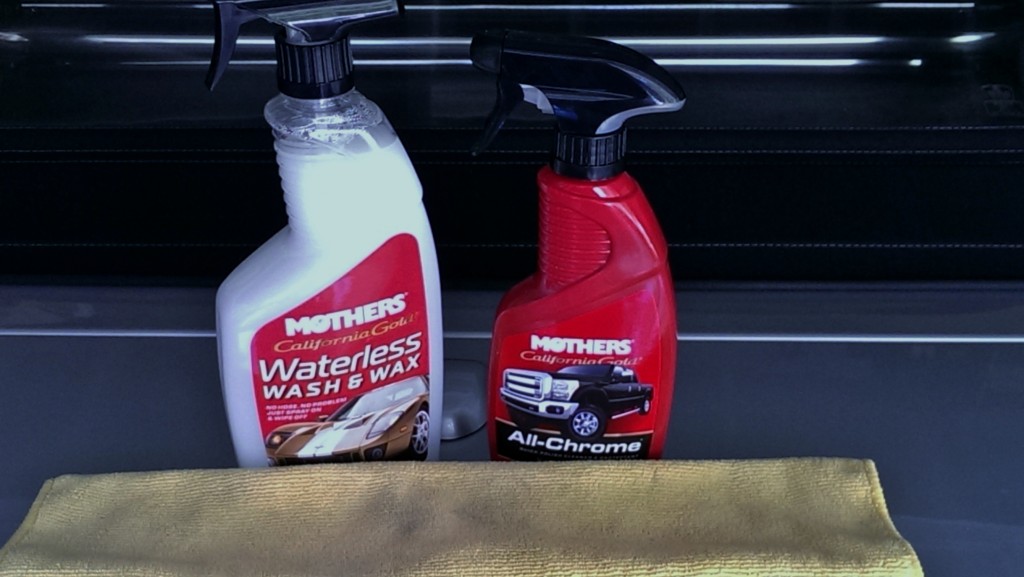Everyone has their favorite and special car detailing hints and tricks, plus their preferred brand of products. I certainly don’t know it all, but have been shining up cars for more than 40 years, so I can only share what I’ve learned, and others can employ my thoughts or refute them as they wish.
The question I’m always asked is “what kind of wax do you use” and the variation “which wax is best.” The answer to both, really, is that “the best wax you’ll actually use and apply to your car instead of letting it age and go bad on a shelf in your garage” with the footnote of, “that depends on your car and what kind of paint it wears and what shape its in.”
Unlike most great red wine, car detail products don’t get better with age. I remember when my folks moved out of their big house, the one that I grew up in, and it bothered me that when cleaning out the garage, we threw away bottle after bottle and tin after tin of wax and other good detail products that had gone bad over time. By then his health was such that he couldn’t do this job on his cars any more, and even though I’d get over there a few times a year to do them, I never used up the stuff fast enough, or enough of it at a time, to use it before it timed out.
So buy good quality products, and use them up, rather than age them out and throw out the leftover gunk. Most of what I’m talking about here is maximizing and protecting recent paint jobs that are in generally good shape. If you have an old car with a lacquer and clear paint job, or faded single stage paint that you’re trying to bring back, I recommend you seek out professional guidance about your specific situation.
Frequency is another big question; sorry but there’s no such thing as “once a year car wax.” These products are designed to shine and protect for a certain amount of time, then they wear away with exposure and frequent washing, and need to be renewed and redone to keep your car tip top all the time.
As to brands, everyone has their faves and preferences. I’ve tried them all. The detail supply shelves in my garage are filled with Mothers, Meguiar’s, Surf City Garage, and a fairly new brand called Pinnacle, recommended to me by my friend Wayne Carini. I’ve had good luck with all of these, as well as others from time to time. They all supply a variety of products, from car washes, all sorts of polishes and waxes, vinyl, leather, rubber, tire and plastic treatments, and so forth. They all have websites that describe their products in detail and they jobs they are designed for; you can learn a lot by trolling their on line marketplaces.
Without giving you a blow by grind treatise on every step of how to detail your car, I offer these semi random thoughts:
Keep your garage and your kitchen separated. The harsh soaps and cleaners that cut the grease off your dishes, or remove spots from your clothes, are really harsh on your paint and trim. All the big brands make car wash liquids specially formulated to float away dirt and remove modest stains without drying our paint and vinyl. Some people say “don’t use soap on your car” which I say is wrong. Use soap, but use the right soap. Keep the harsh kitchen products in that room only please.
Begin with a clean dry car. I like to wash my car the night before I plan to detail it, and then leave it overnight in the garage to dry. I also like the garage as the best place to do the detail job; its out of direct sun, but warm enough in most instances to properly dry the wax and protectant products I’m using for easy removal. Plus I have a small wheeled mechanics’ stool that I use when working on the sides of the car instead of bending over or crawling around on my knees. If you have a two car garage, take the second one out and park the machine you’re working on diagonally in the garage to allow you access to all sides, front and back.
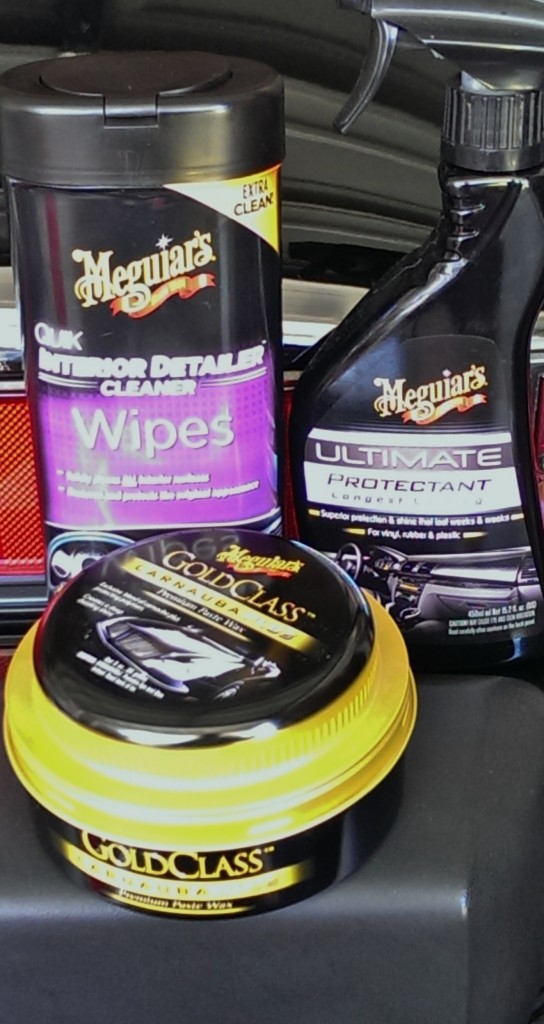
Most top car care companies produce various lines of liquids and pastes, employing natural material and synthetics; try a variety and see what you like and what looks best on your car.
Old school paste wax or liquid? Everyone has ideas about this, and I use both for different cars. Nothing provides the warm glow of carnuba paste, but of course its more time consuming to apply and to remove, although so much easier than the heavy dark pastes of yesteryear. If I’m doing my all black single stage paint 911, I take the time and effort to use Carnuba paste. Takes longer, lots of work, but the result warms your heart.
One step or multistage waxing process? Again, horses for courses. I use both depending upon the car , time on hand, and my mood. The best results come from using detailer’s clay and/or a cleaner polish first, then waxing over that. As with most things, effort equals results. Some of the one-step cleaner/waxes do a credible job of accomplishing both things, but ultimately aren’t as effective as doing each process independently of the other. And remember that with most of these products, less is more. Two think coats of most anything comes out much better than an overly thick application of anything.

Pinnacle makes a line of upper end detail products that many pro detailers and show car preppers prefer.
Buffer or by hand? Yes to both. A modern orbital buffer saves time and effort, and the yellow foam heads that most of them use do a wonderful job of helping polish the paint and removing fine scratches. Sometimes I’ll use my buffer to prep and polish the paint then follow up with Carnuba by hand. I particularly like my Mothers Wax Attack “palm buffer”; its light, strong enough to do the job, and the foam pads come on and off with Velcro.
Wheels and tires are a whole nuther subject, and entire books have been written about them. I use lots of car wash solution and water to clean the tires with a stiff brush, and also invest the time to really get in and clean all the nooks and crannies in the wheels (with a not too stiff brush), and around the lug nuts. Then polish and wax your wheels too, plus some good tire treatment to keep the rubber fresh and looking black with a modest gloss.
When you’re done polishing and waxing, but before you treat your tires, rubber trim and plastic, wash the car again with cold water and no soap. It “sets” the wax you just applied, and rinses away any powder residue, which many products don’t leave so much any more.
New tech microfiber towels or just plain old used up hotel and beach towels? For washing and drying I like worn out bath sheets or beach towels cut in half. But for wax and polish removal, I strongly recommend micro fiber towels. The really pull the wax off nicely and don’t scratch. All the detail product houses make and sell them. Use and rewash and they last a long time and do a great job.
There are also a variety of spray waxes, “quick detailers,” waterless wash products and such, which offer differrng benefits in between full details and washes. Also get one of the world famous “California Car Dusters” and dust your care often, it’ll stay cleaner longer and your wax job will last longer too.
The last and best thing you can do to protect car post detail is to keep a cover on it when it has to sit in the sun for days on end. A modern, lightweight cover of synthetic materials breathes and keeps moisture from trapping underneath it, and protects everything from the perils of sun and airborn pollutants. Honestly, most covers won’t keep your car that clean, but do wonders to avoid ageing your paint, interior, and trim. I’m big on them.
As I mentioned, there are lots of great products on the market, more and better than ever. Each of these companies’ websites has tutorials and lots of good advice about what is best to use when and where. Plus a ton of stuff on YouTube.
Most importantly is that you identify products that you like and work on your car, then use them often, which not only keeps your car looking great, but then they don’t age out, go bad, and waste your money without having a shiny car.
And it’s a great physical workout too. There, I’ve crowned a new term: Aerobic Car Detailing. Enjoy, and stay shiny.

